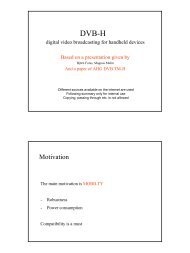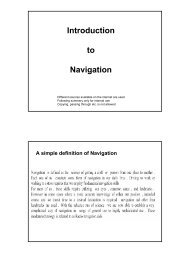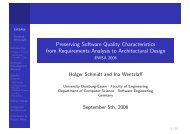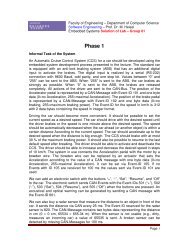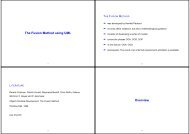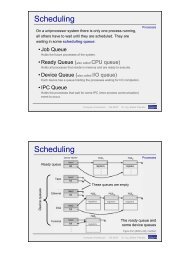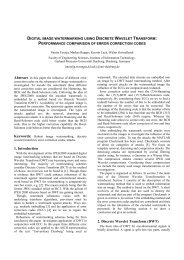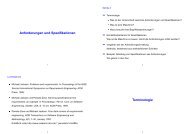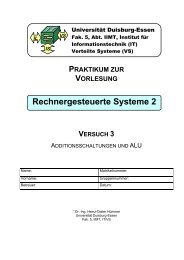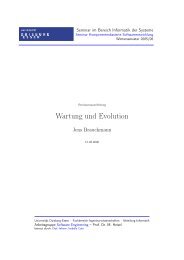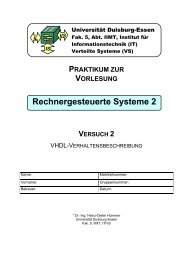(4 slides per page) - Updated
(4 slides per page) - Updated
(4 slides per page) - Updated
You also want an ePaper? Increase the reach of your titles
YUMPU automatically turns print PDFs into web optimized ePapers that Google loves.
Overview<br />
Phase 10<br />
Introduction<br />
Notations<br />
Java<br />
Implementation<br />
of modules<br />
Module Tests<br />
Procedure<br />
Example - TLC<br />
Example - SBC<br />
Phase 11<br />
Phase 12<br />
Summary<br />
Overview<br />
Phase 10<br />
Introduction<br />
Notations<br />
Java<br />
Implementation<br />
of modules<br />
Module Tests<br />
Procedure<br />
Example - TLC<br />
Example - SBC<br />
Phase 11<br />
Phase 12<br />
Summary<br />
Executing Phase 10<br />
In general, the procedure to implement and test software<br />
components using an object oriented programming languages<br />
can be described as follows:<br />
1. Create interface classes for all internal interfaces (also for<br />
subcomponents).<br />
2. Create classes for all (sub-)components and implement<br />
them.<br />
Implement actions as private methods.<br />
Implement the state machine.<br />
Implement the active classes with threads.<br />
Check all classes if there is a concurrent access to complex<br />
variables and resolve this problem with the synchronized<br />
statement.<br />
3. Implement test cases for all components (except HAL)<br />
according to the sequence diagrams of Phase 8.<br />
4. Run test cases.<br />
Remarks II<br />
The software components are implemented using some<br />
simple heuristics. For embedded systems, usually a static<br />
connection between components is established. The<br />
connectors in the composite structure diagrams can be<br />
implemented e.g. as data streams, method calls,<br />
asynchronous messages, or hardware access.<br />
This development process allows developing statically<br />
linked software components with the capability of reuse.<br />
37 / 89<br />
39 / 89<br />
Overview<br />
Phase 10<br />
Introduction<br />
Notations<br />
Java<br />
Implementation<br />
of modules<br />
Module Tests<br />
Procedure<br />
Example - TLC<br />
Example - SBC<br />
Phase 11<br />
Phase 12<br />
Summary<br />
Overview<br />
Phase 10<br />
Introduction<br />
Notations<br />
Java<br />
Implementation<br />
of modules<br />
Module Tests<br />
Procedure<br />
Example - TLC<br />
Example - SBC<br />
Phase 11<br />
Phase 12<br />
Summary<br />
Remarks I<br />
Only the software components are implemented in this<br />
phase. They will be connected / integrated in the next<br />
phase.<br />
The validation of this phase is <strong>per</strong>formed by running the<br />
test cases.<br />
The HAL is difficult to test because the hardware is<br />
directly connected to the HAL. Therefore, manual tests<br />
using measurement equipment and debugging tools should<br />
be <strong>per</strong>formed.<br />
Real-time functionality must be tested in an emulator.<br />
Example 1: traffic light control<br />
38 / 89<br />
40 / 89



